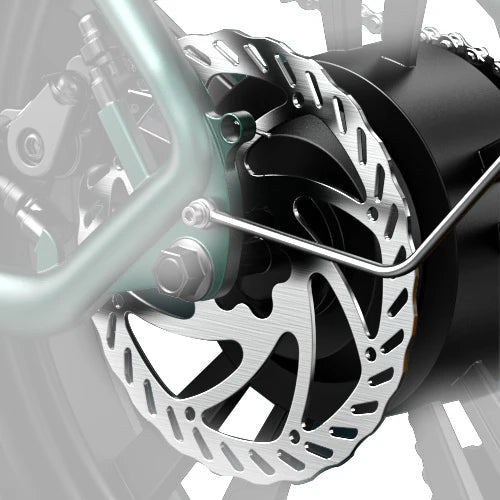How Do Disc Brakes Work: Your Comprehensive Guide to Vehicle Safety?

Disc brakes are the unsung heroes of our vehicles, silently ensuring our safety on the roads. If you've ever wondered how these intricate systems work and the science behind them, you're in for a treat. Let's explore the fascinating world of disc brakes and uncover their secrets.
The Science Behind Disc Brakes
Disc brakes work on the fundamental principle that friction opposes motion. When you press down on the brake pedal, a complex ballet of mechanical components springs into action. The master cylinder, acting as the conductor, sends hydraulic pressure through the brake lines to the calipers at each wheel.
Components of a Disc Brake System
-
Rotor (Disc): The rotor is the large, circular metal disc attached to the wheel. It's crafted from durable materials capable of withstanding the heat generated during braking.
-
Brake Caliper: This component resembles a clamp and is responsible for squeezing the brake pads against the rotor. The caliper houses the pistons that respond to hydraulic pressure.
-
Brake Pads: These are the friction materials that press against the rotor, creating the friction necessary to slow down or stop the vehicle.
The Art of Braking
The design of disc brakes is a testament to engineering prowess. Ventilated rotors, grooved discs, and carefully chosen pad materials all contribute to maximizing braking performance. The goal is to dissipate heat effectively and ensure consistent braking, even in the most demanding conditions.
Front vs. Rear Brake Systems
While both front and rear brakes serve the same purpose, their designs cater to different needs:
-
Front Brakes: These are the workhorses of the braking system, providing the majority of the stopping power. They are typically larger and more robust, equipped with features like multi-piston calipers and ventilated rotors to handle the heat generated during braking.
-
Rear Brakes: Designed to provide stability and support, rear brakes assist in emergency maneuvers and help prevent spinouts and rollovers. They are often smaller and operate at lower pressures.
The Importance of Maintenance
Regular maintenance is crucial for the longevity and reliability of your brakes. Signs like squealing, reduced stopping power, or a sudden drop in brake fluid level without visible leaks are red flags that your brakes need attention.
Conclusion
Disc brakes are a testament to the marvels of modern engineering, offering a blend of safety, performance, and reliability. Understanding their workings not only demystifies the braking process but also empowers you to make informed decisions about your vehicle's maintenance. So the next time you hit the brakes, remember the sophisticated symphony of components at work, keeping you safe on the road.
